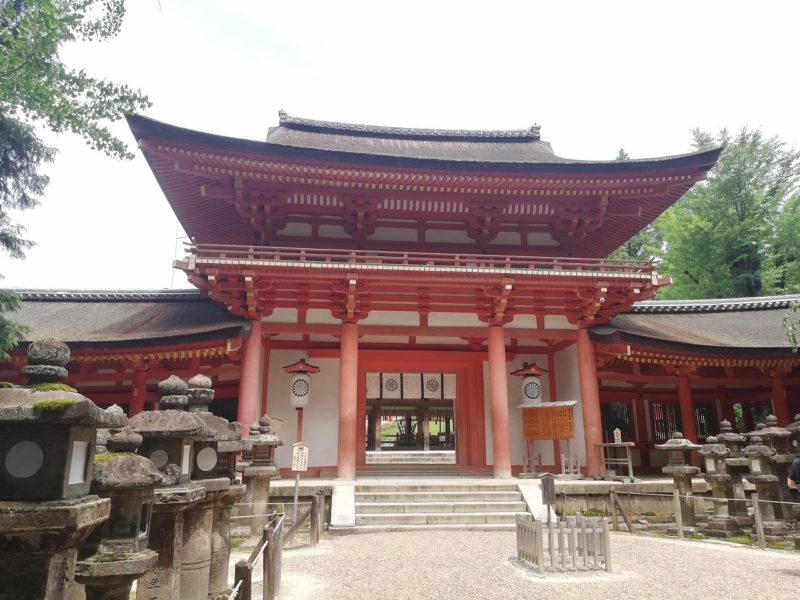
South Gate→ Heiden-Buden→ West Cloister→Naishimon Gate
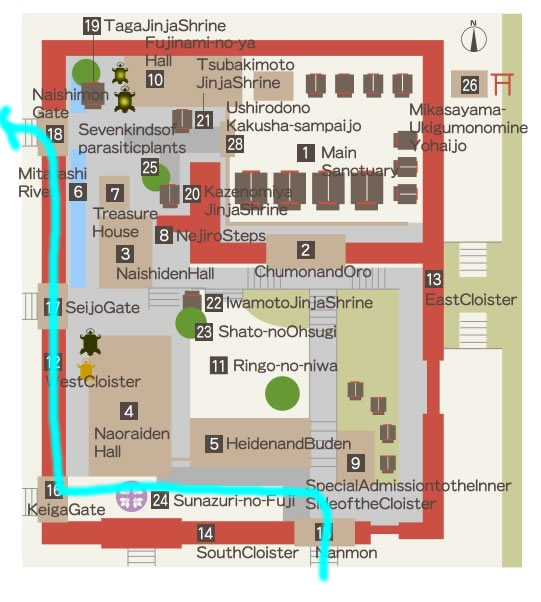
I entered from south gate and prayed at Heiden. This time I did not get into the Inner side of the Cloister. It cost you 500 yen to enter the Inner side for special admission. I will visit the inner some other day soon.
Nanmon(South Gate) – the biggest gate at Kasuga Shrine.

If you come from 御間道 (Oaimimchi), you will see the big Shidare Sakura Tree on the right in front of South Gate. If you visit here on cherry blossom season, you could have beautiful view with cherry blossom.
Nanmon is a two-storied gate standing at the front of Kasuga Taisha Shrine. Having walked along the approach, visitors enter the inner side of the cloisters through this gate. The 12m tall building is the shrine’s largest gate.
Enshrined deities
Enshrined deities:
第一殿 武甕槌命(タケ ミカ ヅチノ ミコト)様
First Hall – Takemikazuchi-no-mikoto
第二殿 経津主命(フ ツ ヌシノ ミコト)様
Second Hall – Futsunushi-no-mikoto
第三殿 天児屋根命(アメノ コ ヤ ネノ ミコト)様
Third Hall – Amenokoyane-no-mikoto
第四殿 比売神(ヒ メ ガミ)様
Fourth Hall – Himegami
Date of establishment: November 9th, 768
Kasuga Taisha’s oldest existing document from the early 13th century, “Koshaki”, said that a shrine hall for four deities was created on November 9th in the year of 768 during the reign of Empress Shotoku, when Fujiwara Nagate was “Sadaijin” (Senior Minister)Origin
https://www.kasugataisha.or.jp/en/guidance_en/#modal-close
In the beginning of the Nara Period (710 – 794), a deity called Takemikazuchi-no-mikoto was moved from Kashima Jingu Shrine (Ibaraki Prefecture) to the top of Mt. Mikasa in Kasuga, Nara, in order to protect the capital Heijo-kyo. A few decades later, in 768, the first shrine structure was built at the present site of Kasuga Taisha by Fujiwara-no-Nagate, one of the national leaders, and other people, according to an order of Empress Shotoku, who was also a relative of the Fujiwara Clan. Adding to the first deity, more deities were enshrined here, including Futsunushi-no-mikoto from Katori Jingu Shrine (Chiba Pref.), Amenokoyane-no-mikoto, supposedly an ancestor of the Fujiwara Clan, and Himegami, both from Hiraoka Jinja Shrine (Osaka Pref.).
Sacred Deers at Nara Park:The deity of Kasuga Shrine, Takemikazuchi-no-mikoto came here from Kashima Shrine(Ibaragi Pref.) with riding on the sacred deer. That’s the reason why in Nara park, about 1300 deers are around, and deers are treated as messenger of the god.
South Cloister
Heiden, Buden - Worship Hall
The 2 bays to the east are called “Heiden”, and the western 3 bays are called “Buden”. Heiden is a place where offerings from the emperor are placed temporarily, and is distinguished from Buden by its coffered ceiling. Buden is where traditional music and dance of the Imperial Court are offered, and is also used as a place for ceremonial music and dance on rainy days.
砂ずりの藤(“Sunazuri-no-Fuji” Drooping wisteria)
Sunazuri no Fuji(suna=sand, zuri=to reach, Fuji=Wisteria)
Wisteria flowers drooping down to reach the sand on the ground, as the flower clusters can be seen to hang down for more than 1 meter when in bloom by early May. It is over 700 years old.
Deer face shaped Votive tablet(鹿の絵馬)
Naoraiden Hall Donated hanging lanterns
West Cloister, Treasure House
West Cloister walking to North
Sakadono, Hetuidono (酒殿・竃殿)
Sakadono: a sacred sake brewery for Kasuga Festival.
Hetuidono: This is a Shinsen(cooked offerings) cooking room.
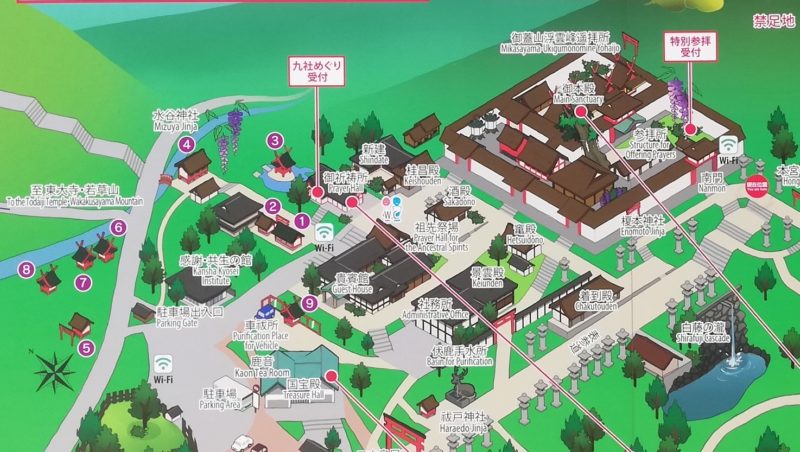
Keishoden(桂昌殿) Shikyakumon(四脚門)
Mizuya-kyusya-meguri (水谷九社(みずやきゅうしゃ))めぐり
Gokitosyo(祈祷所) -Prayers Hall to Mizuya Shrine.
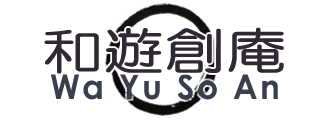
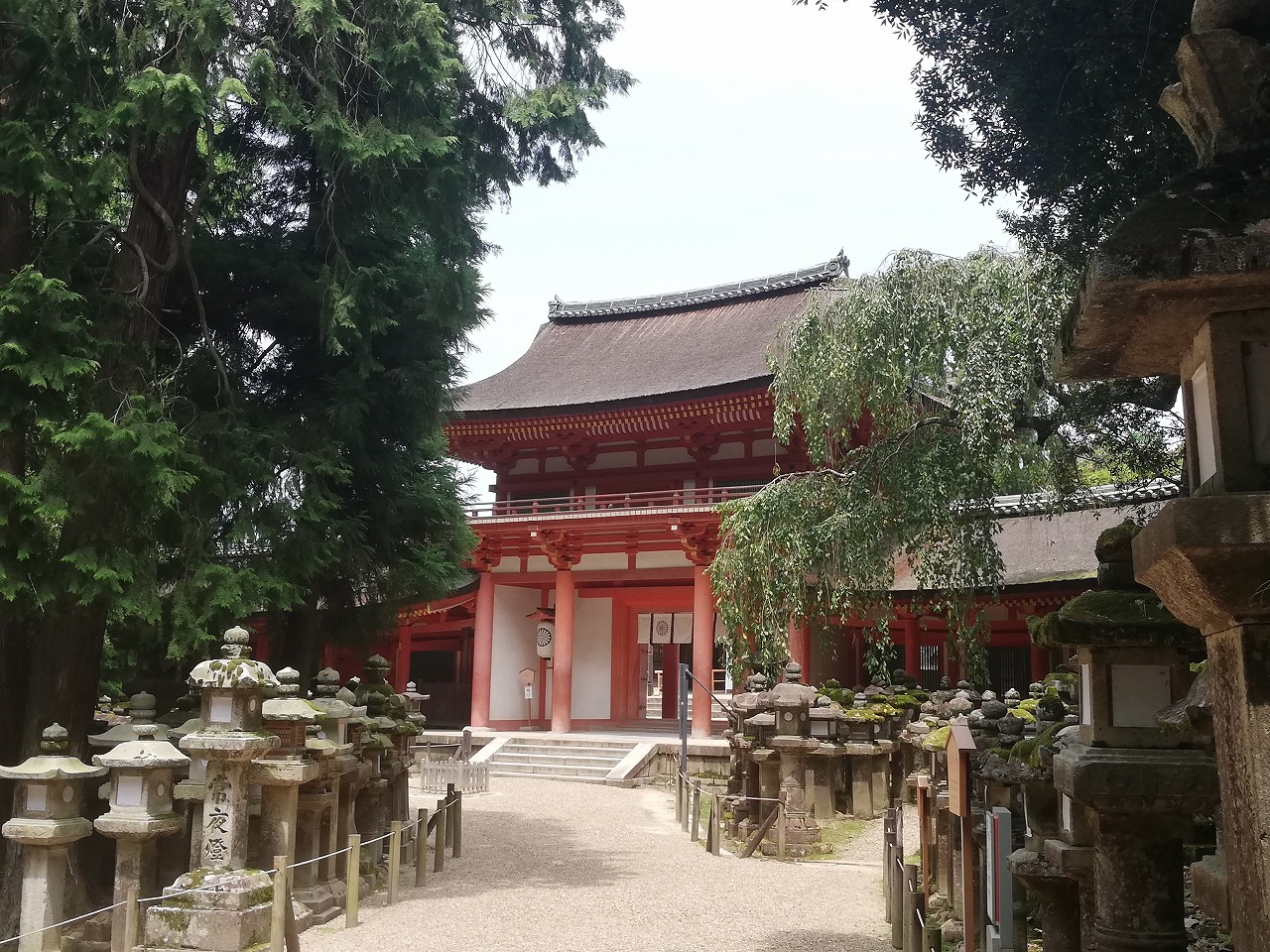
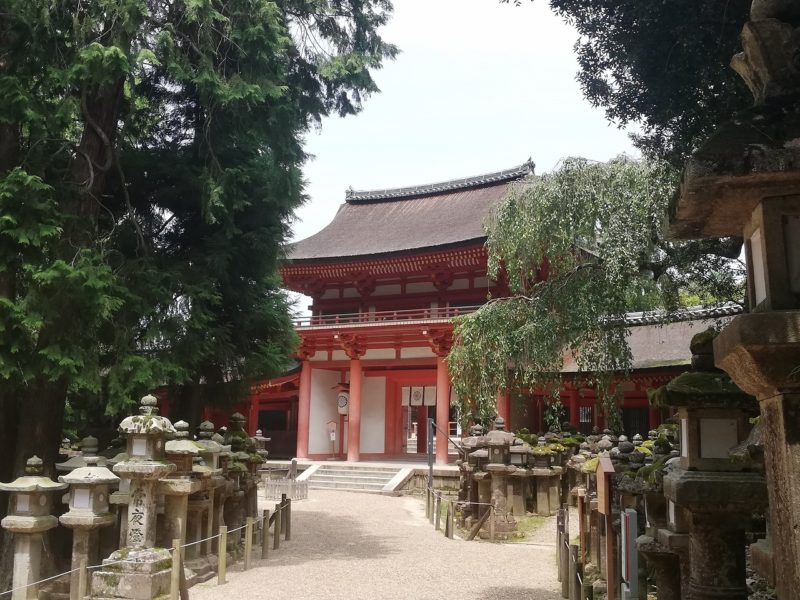
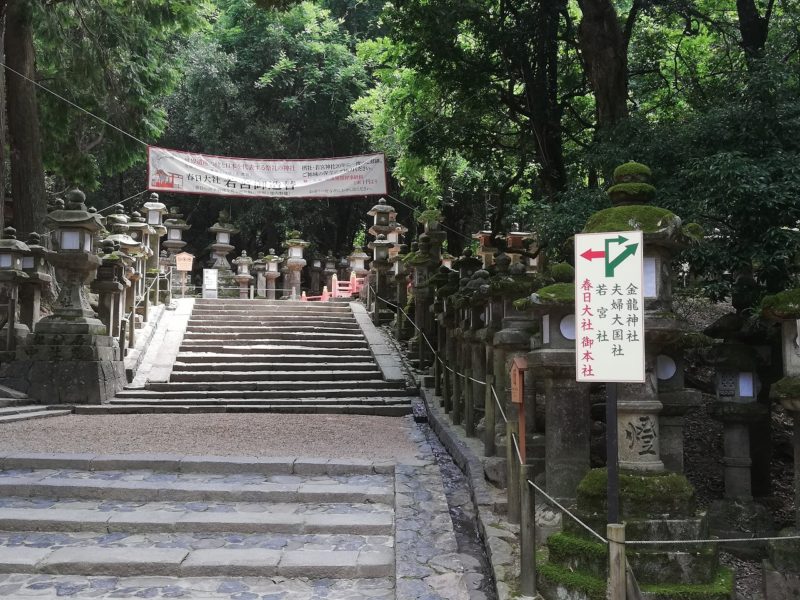
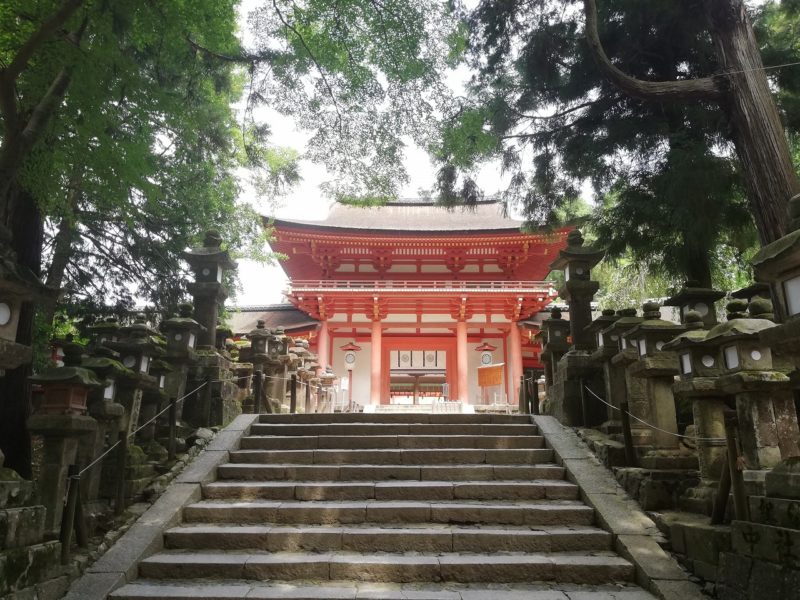
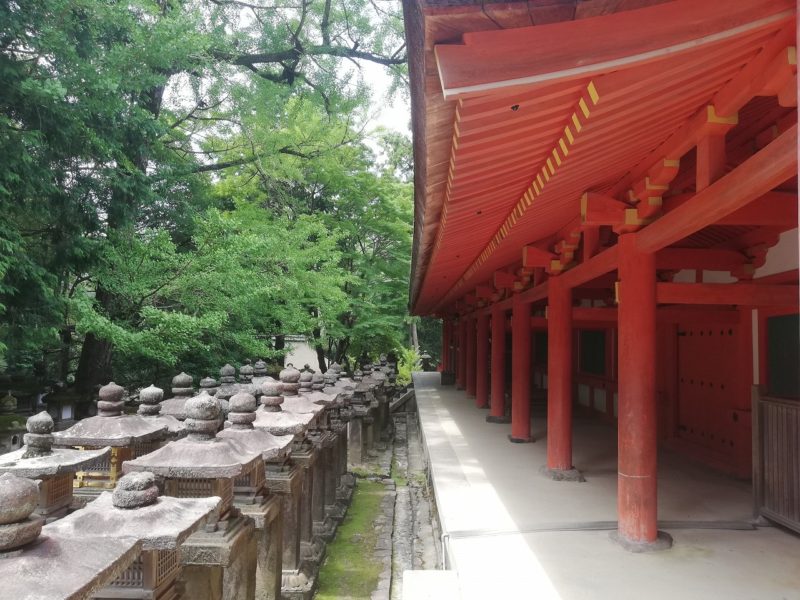
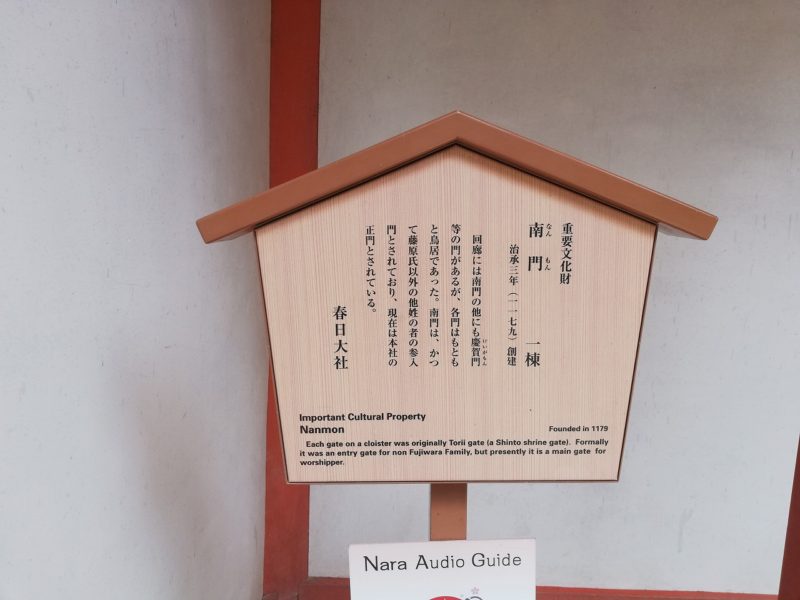
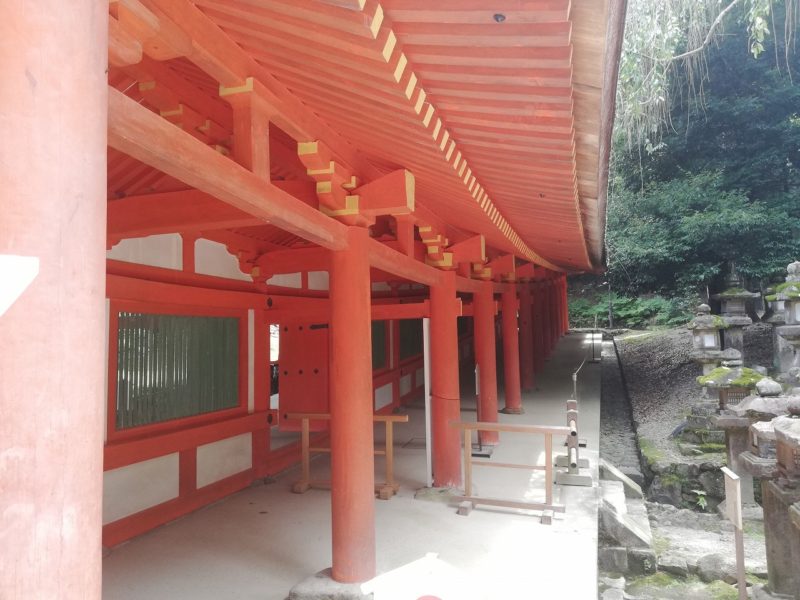
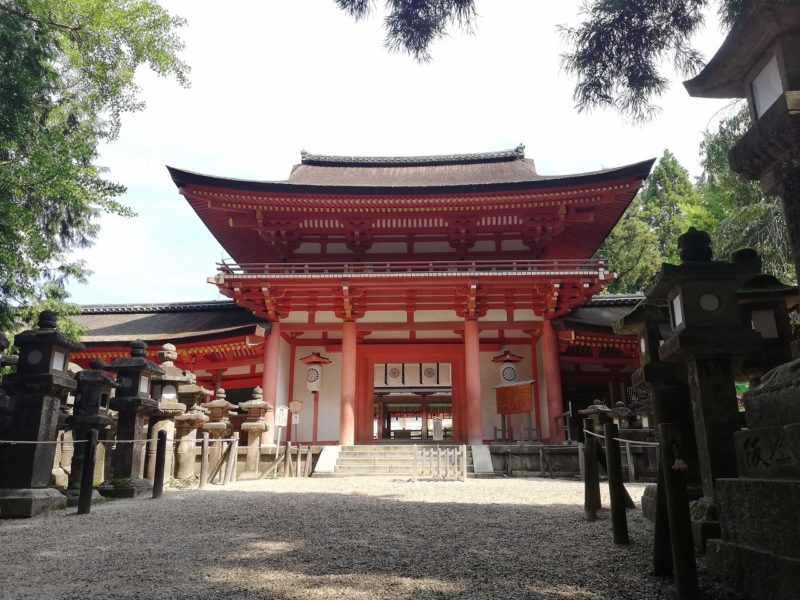
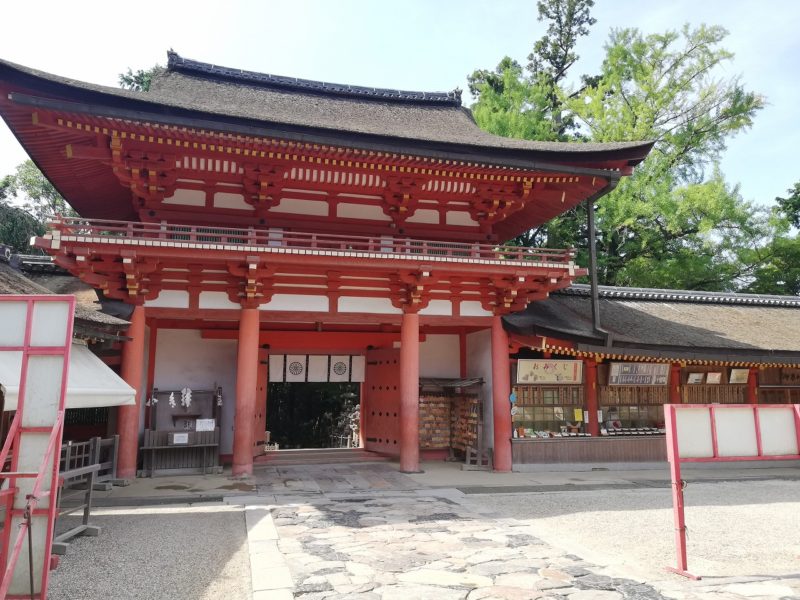
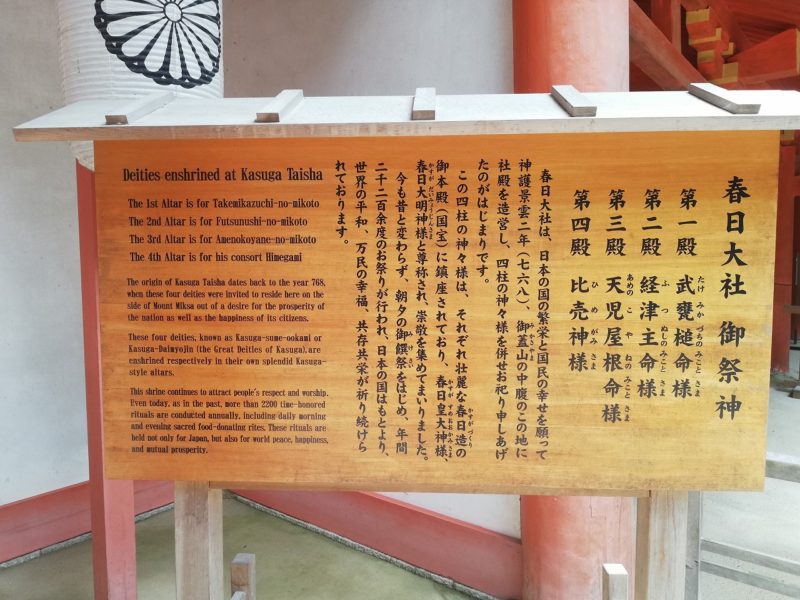
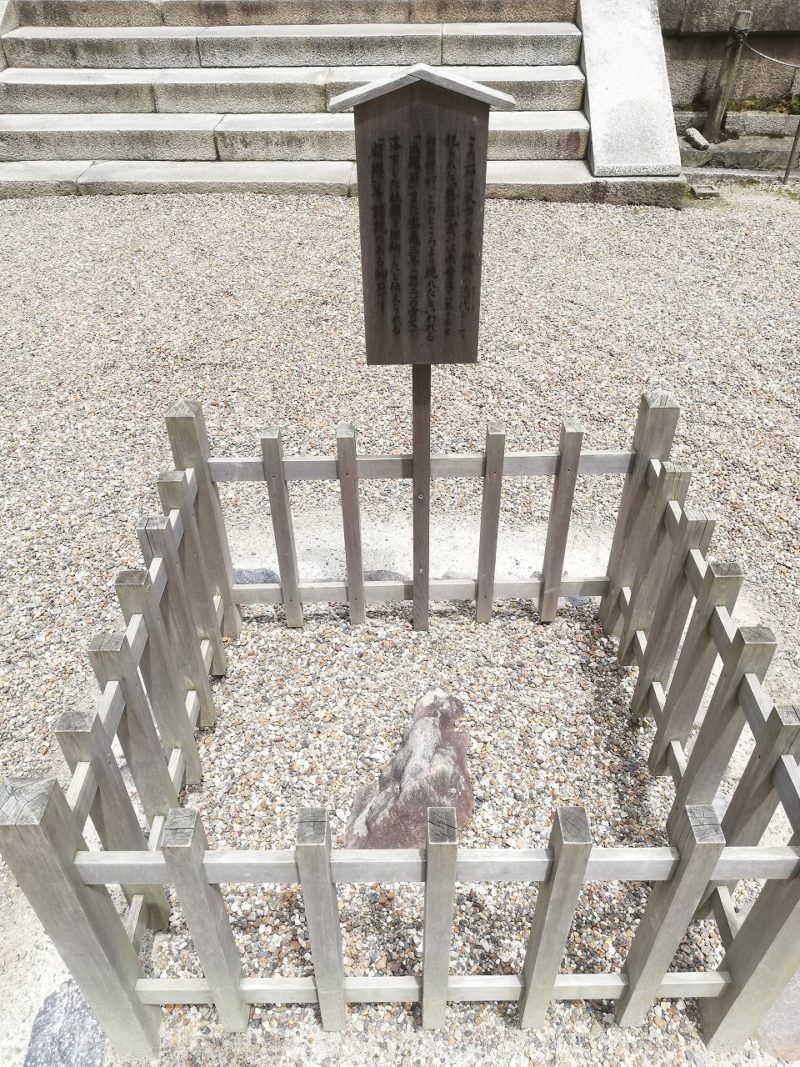
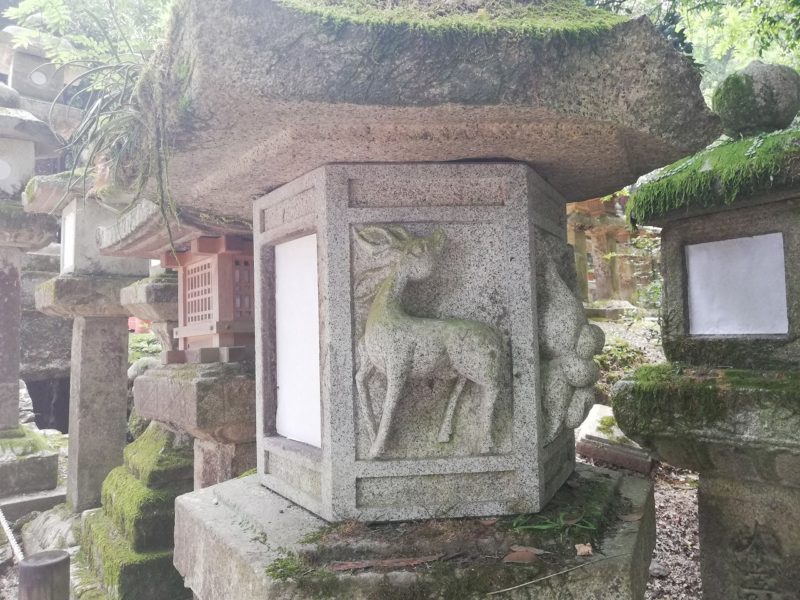
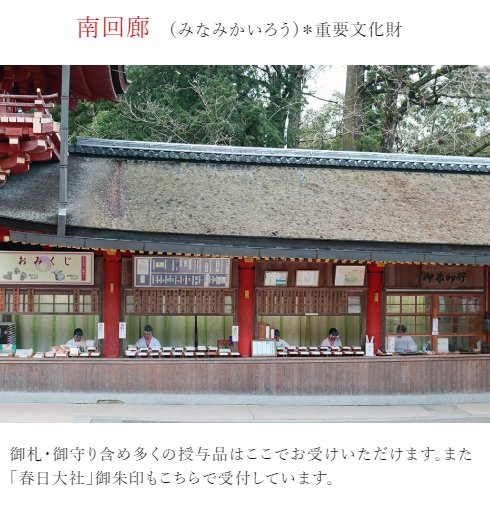
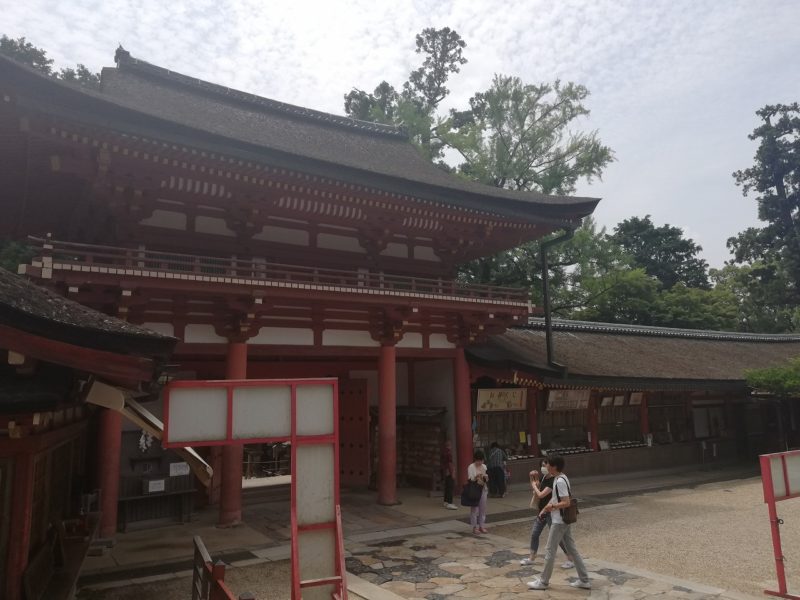
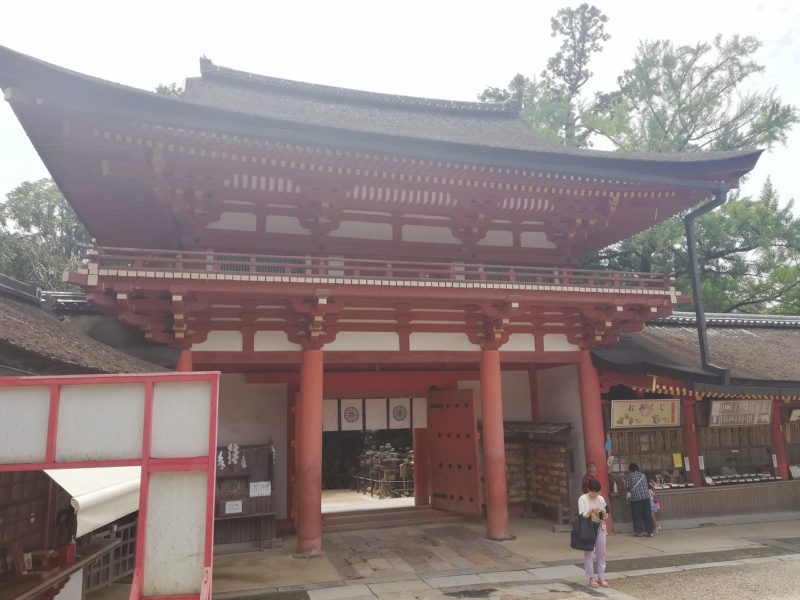
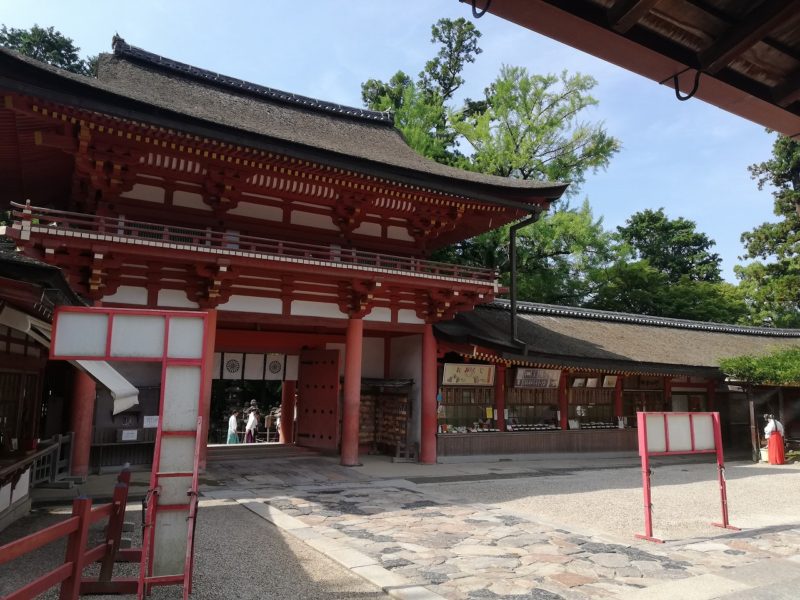

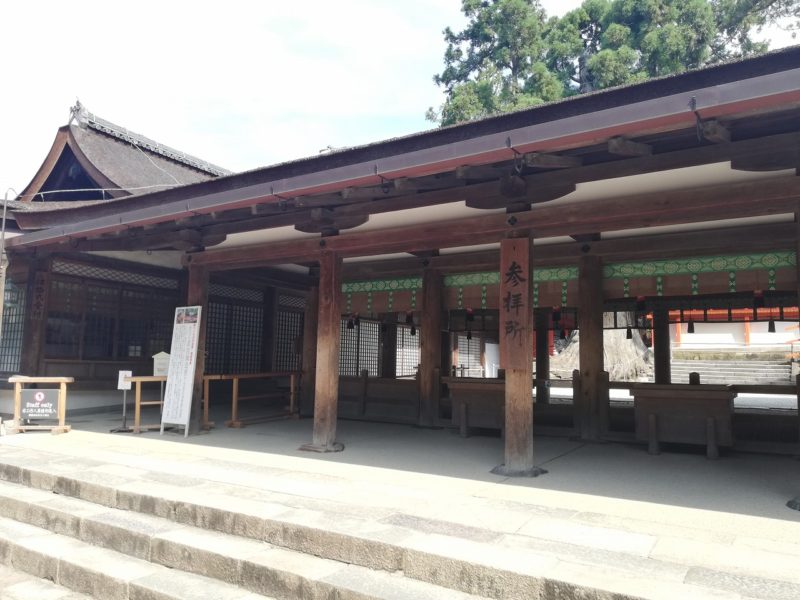
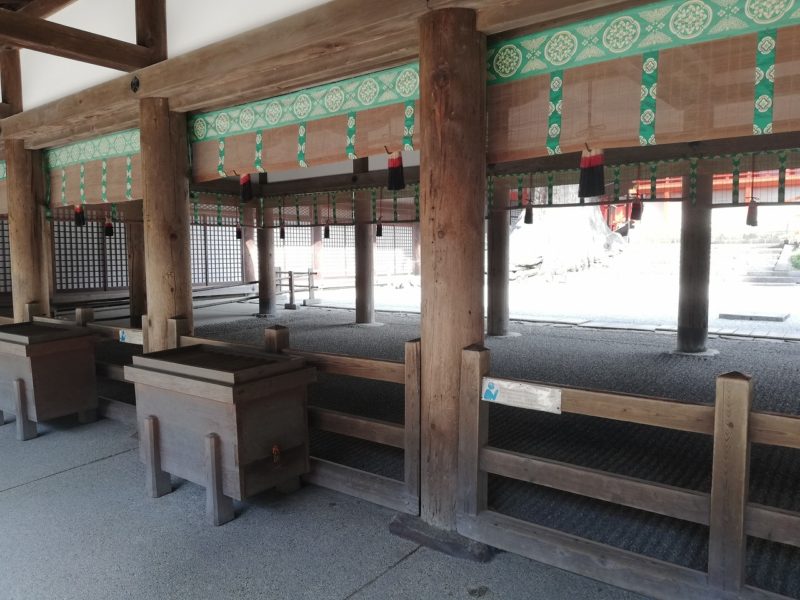
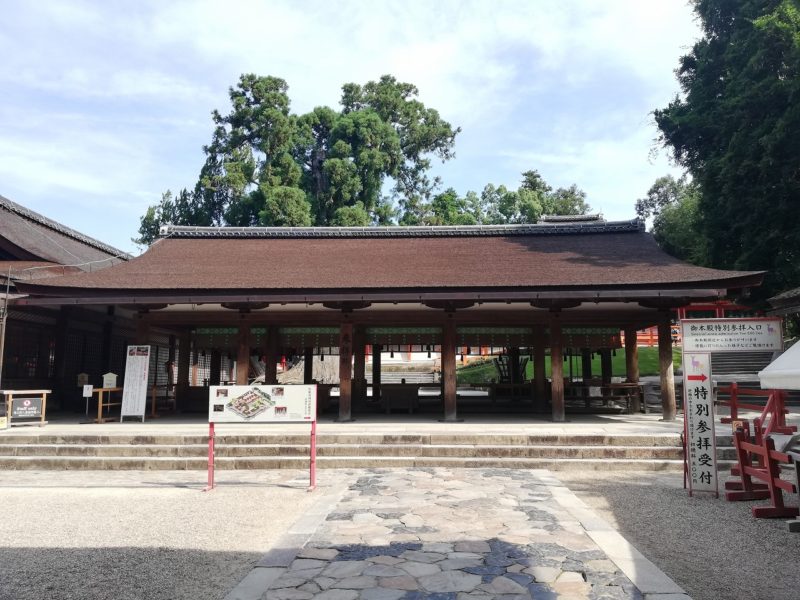
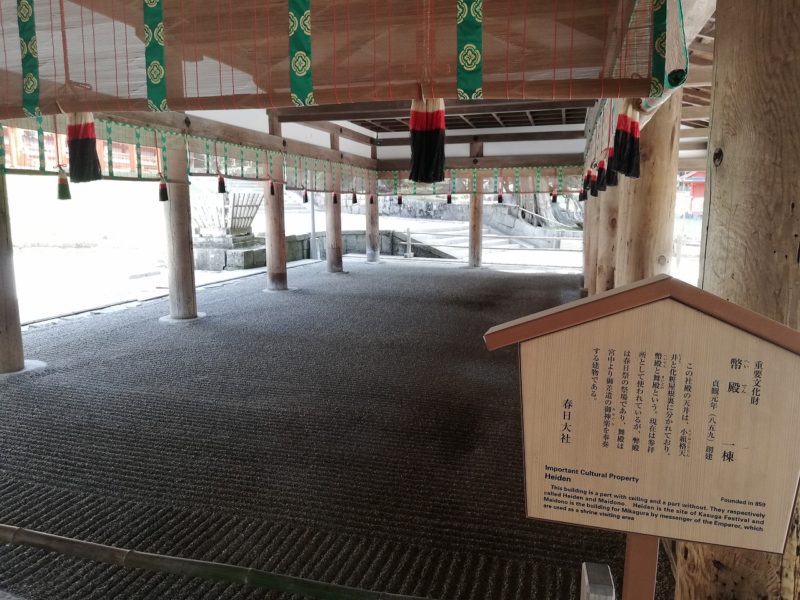
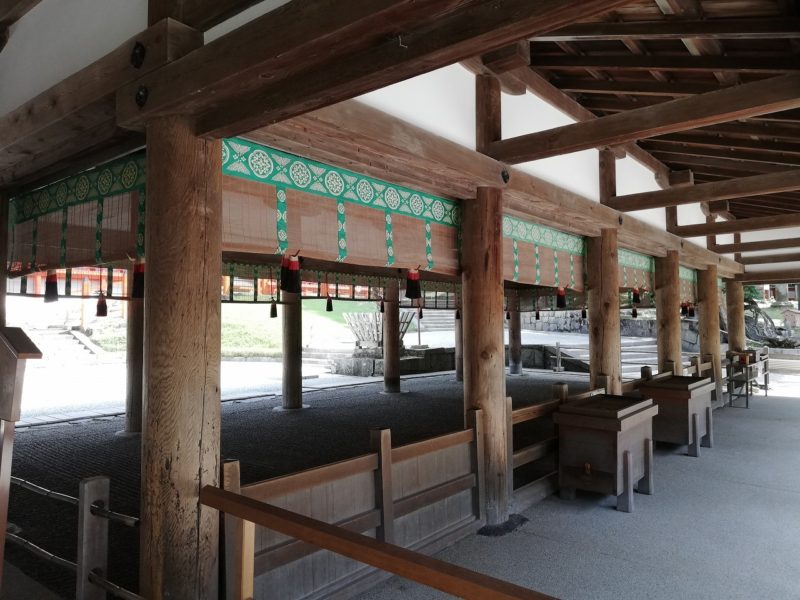
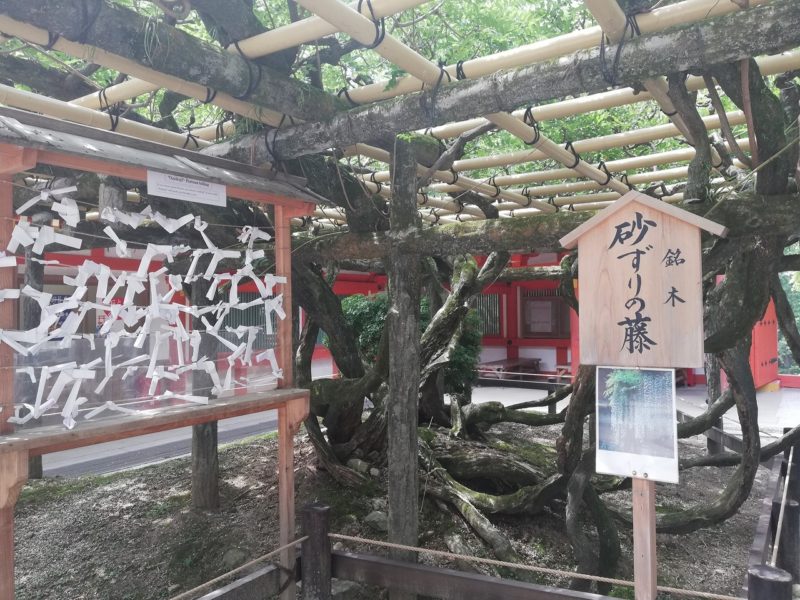
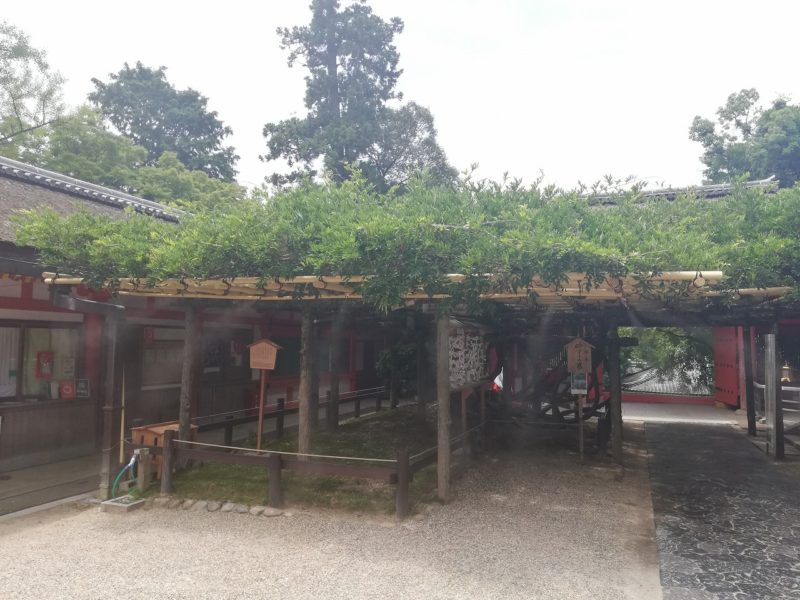
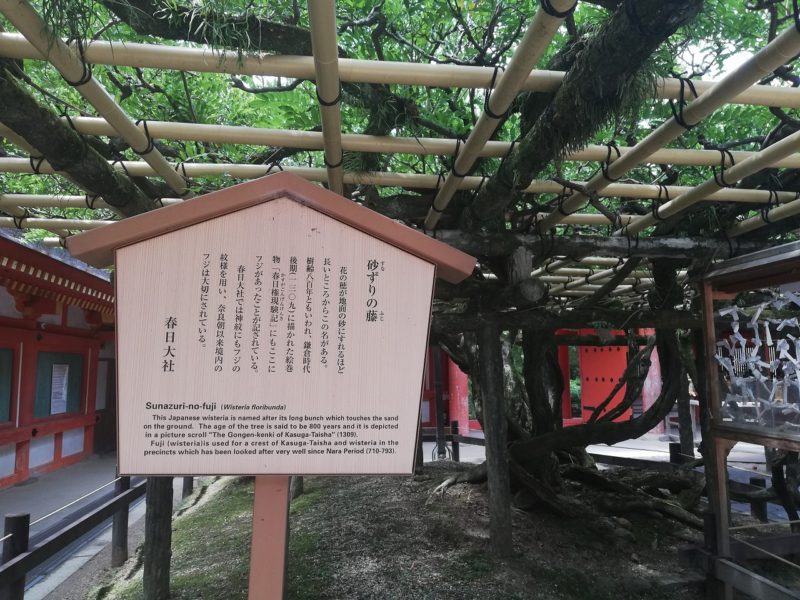
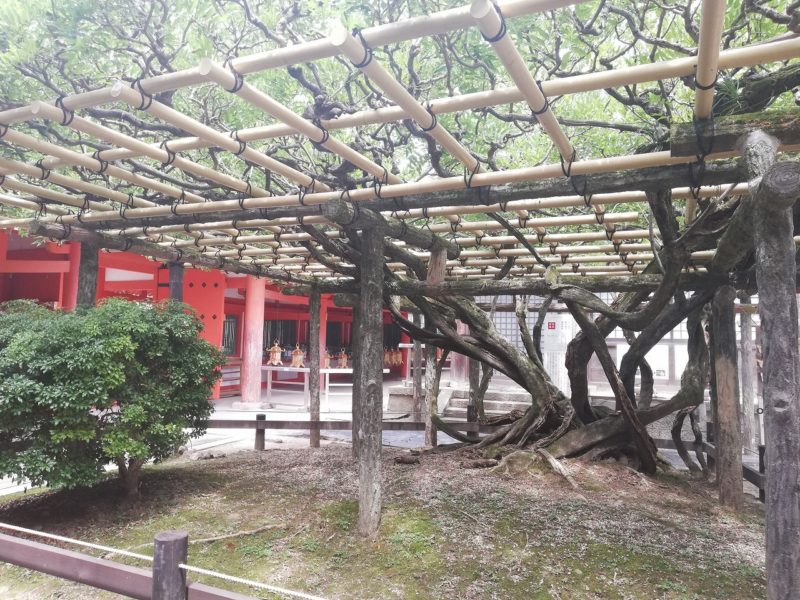
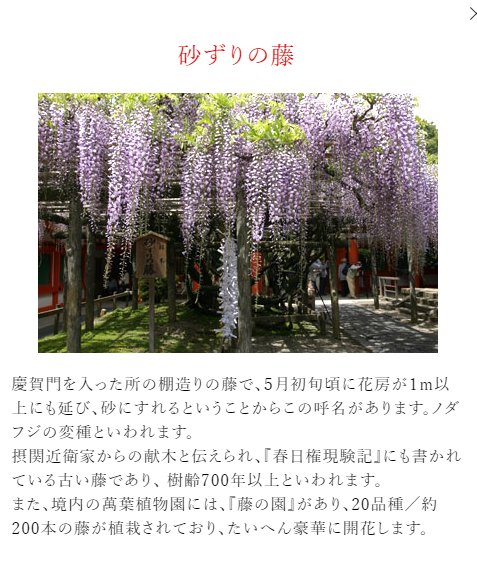
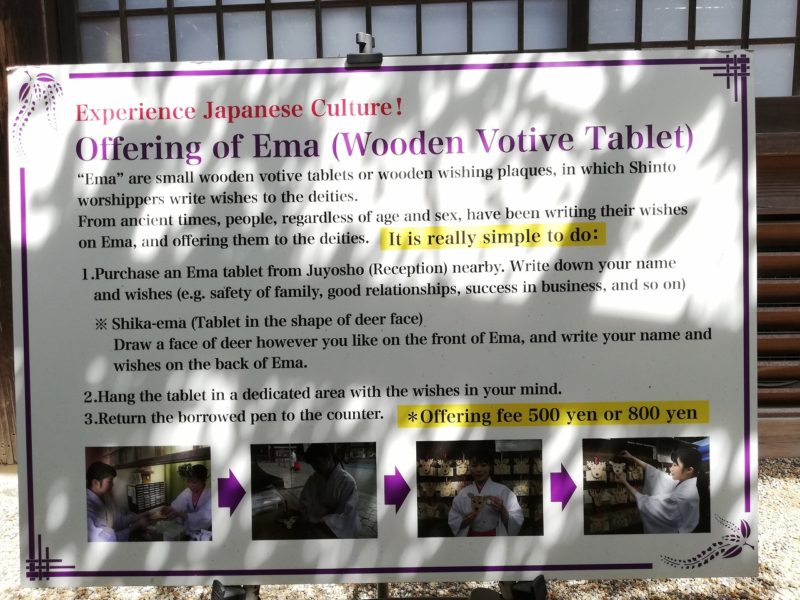
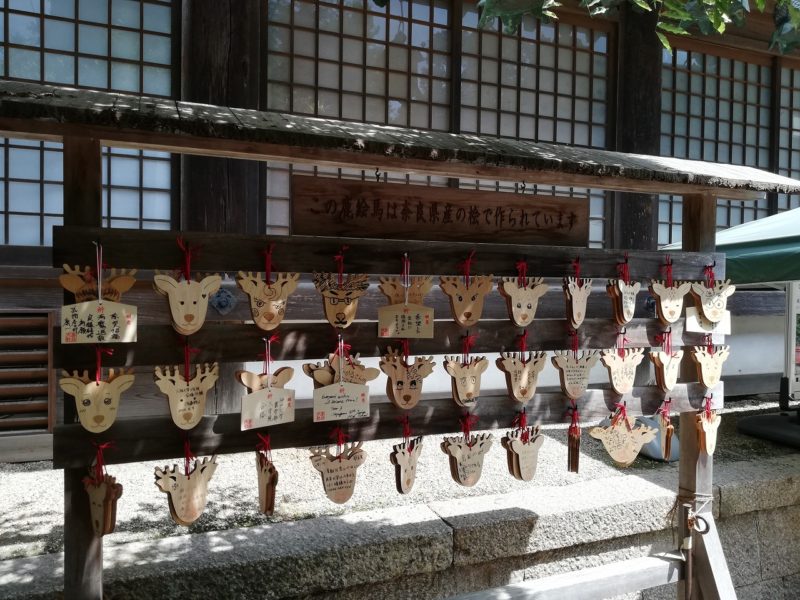
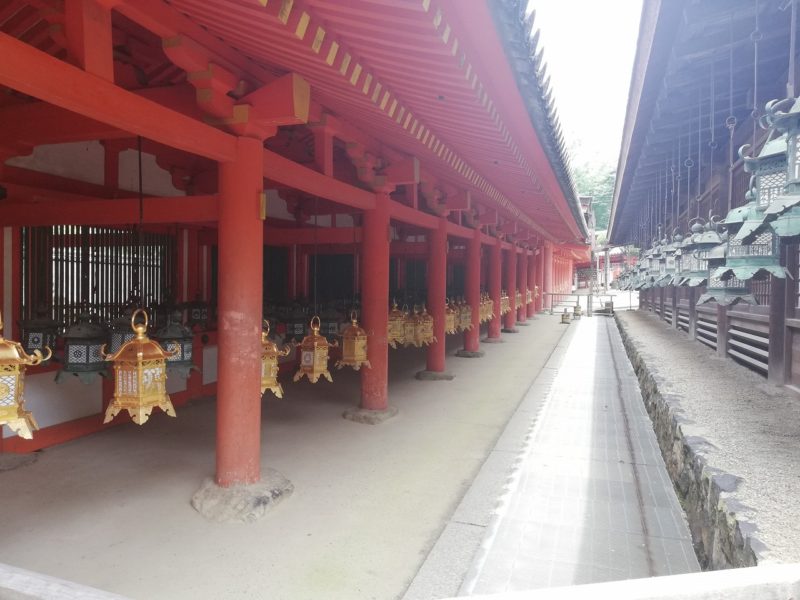
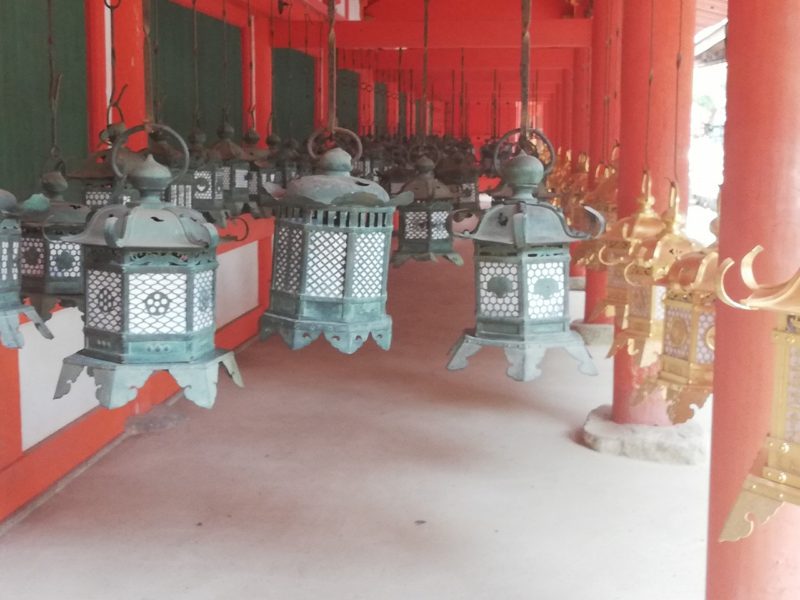
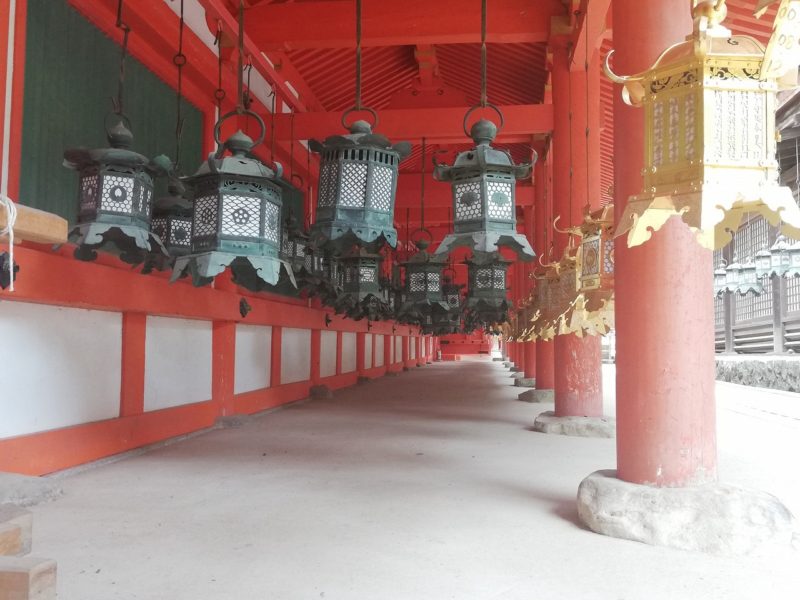

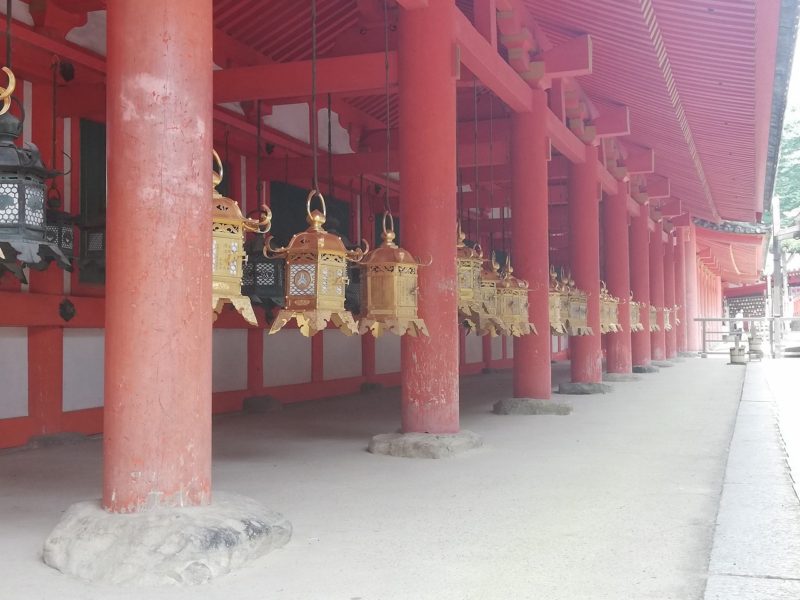
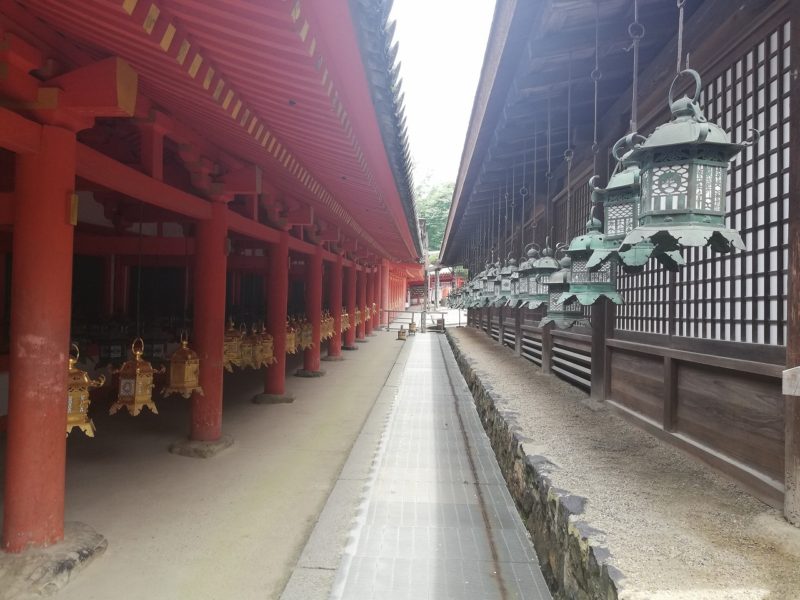
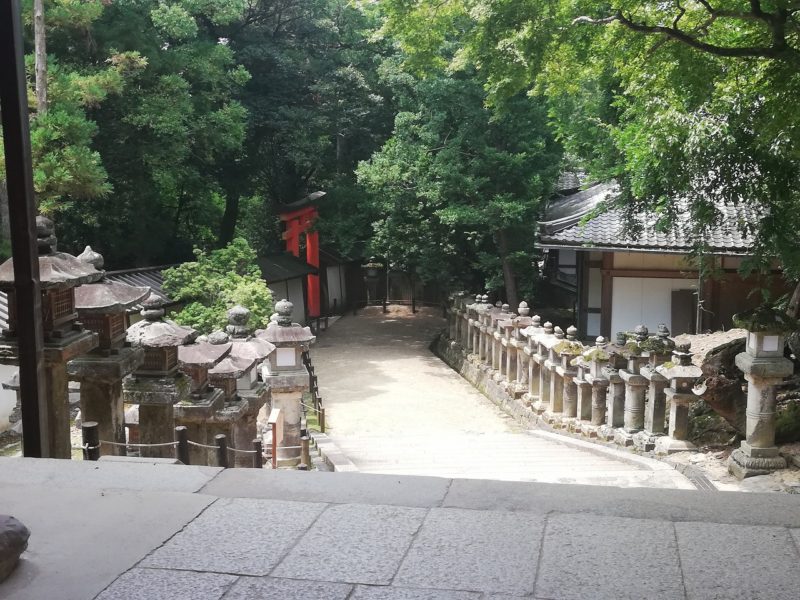
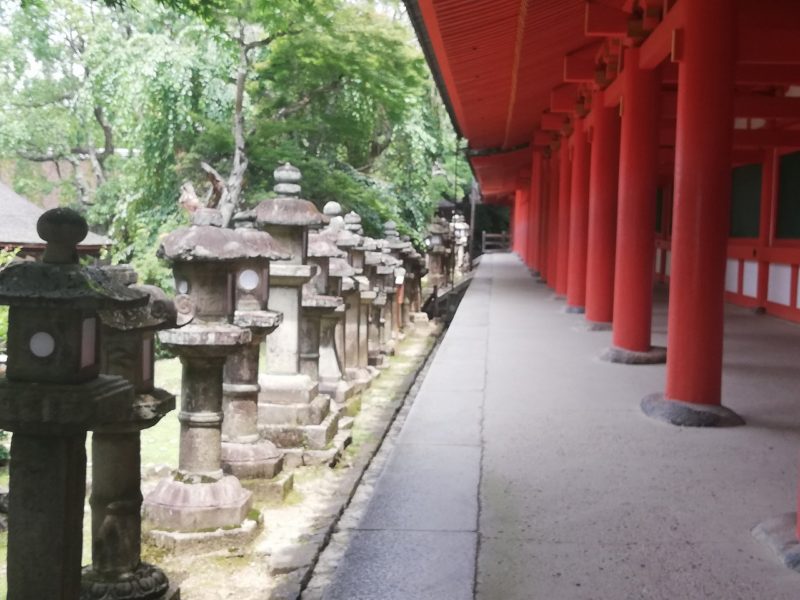
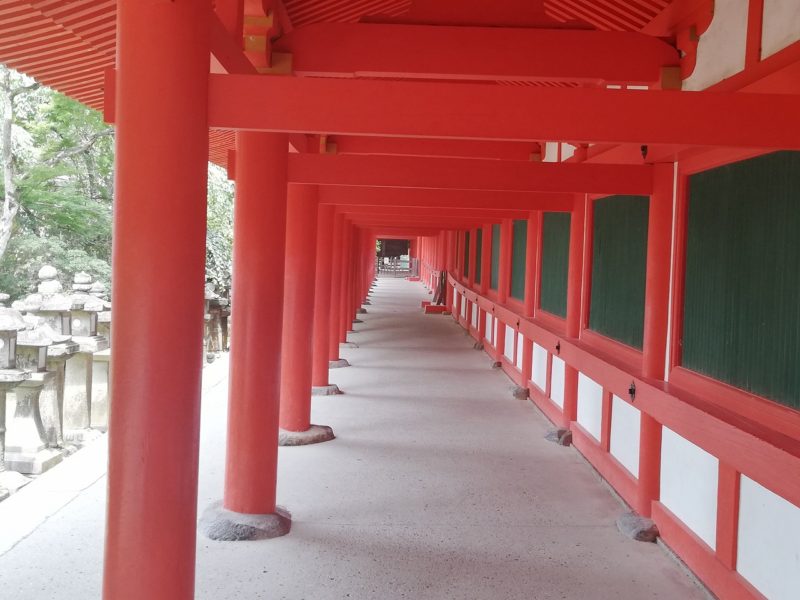
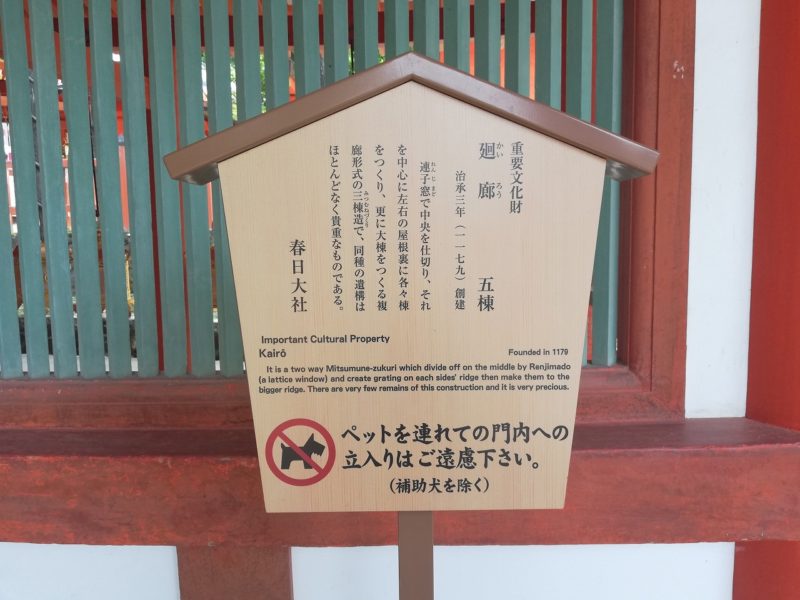
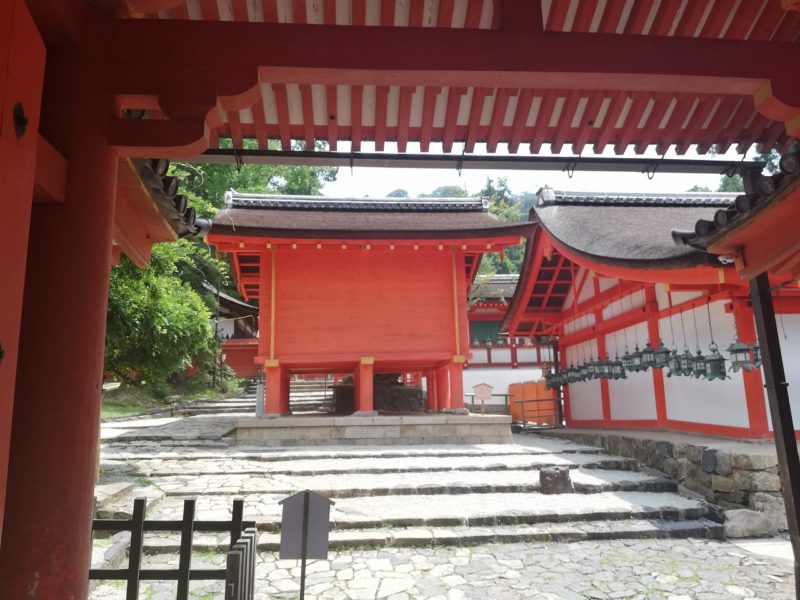
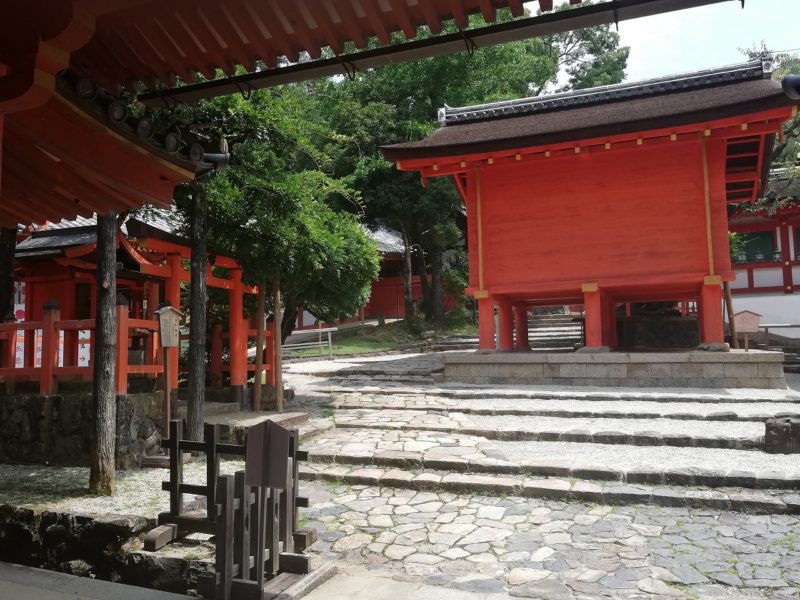
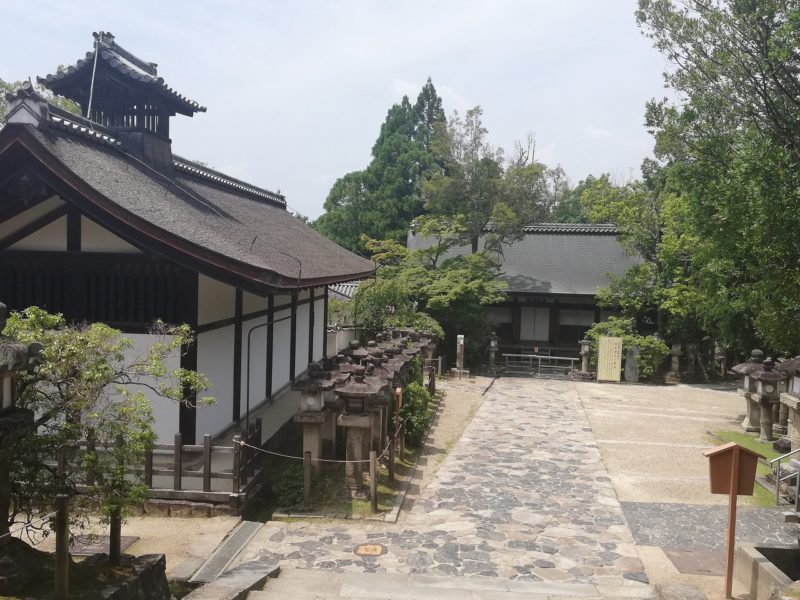
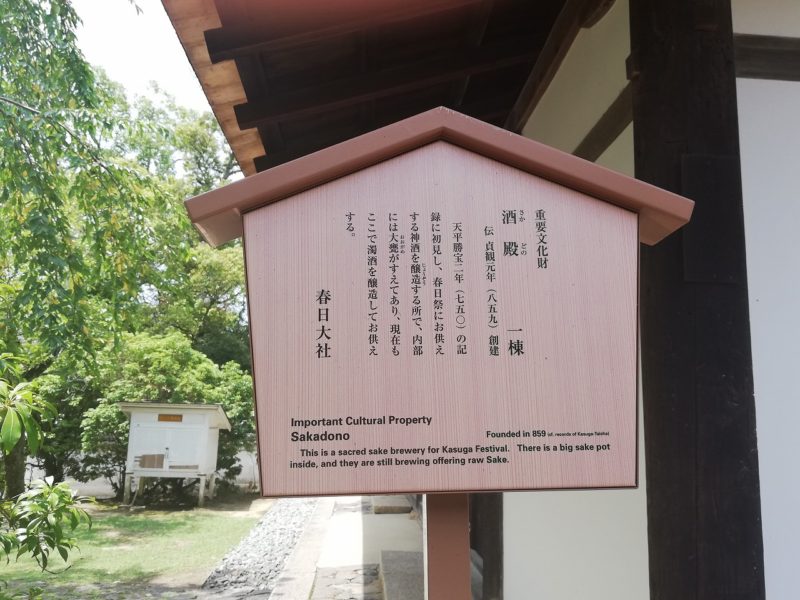

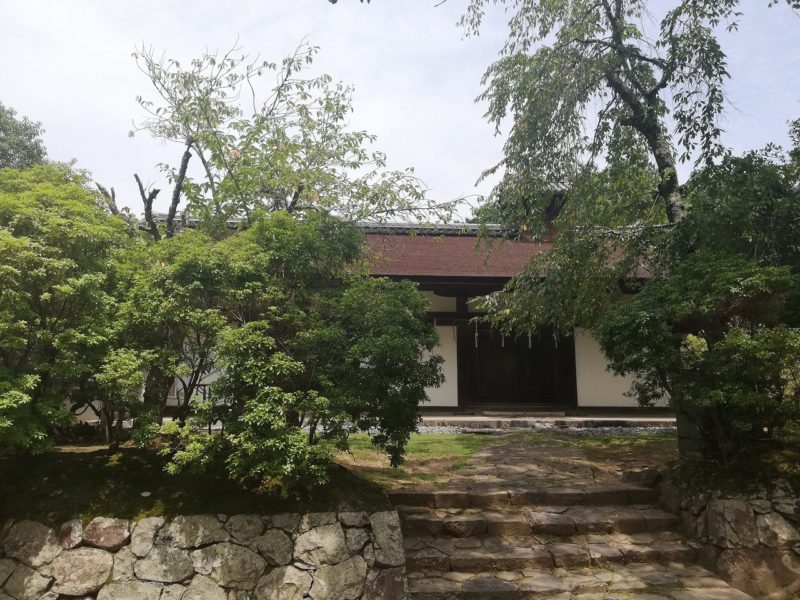

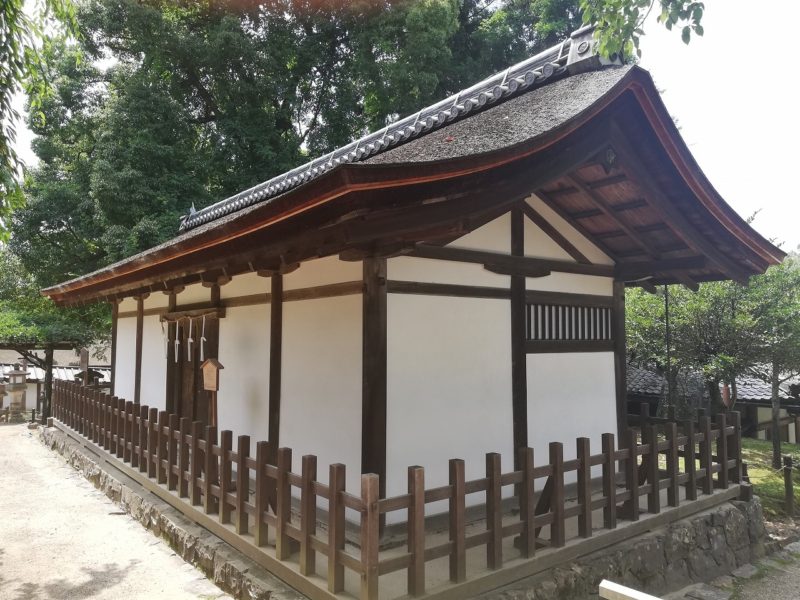
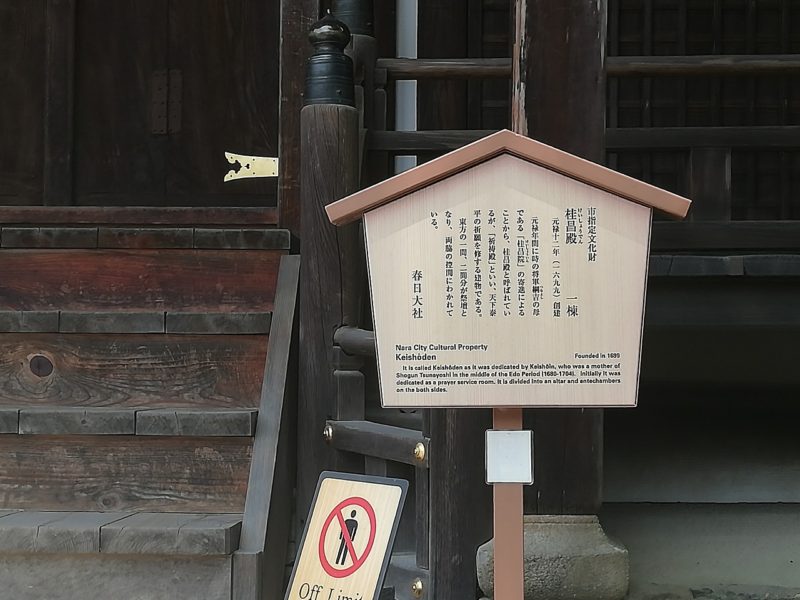
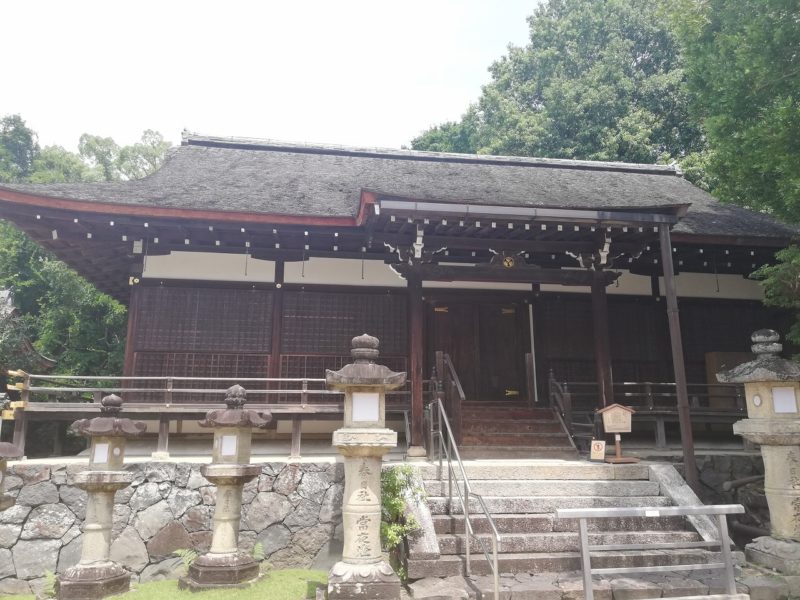
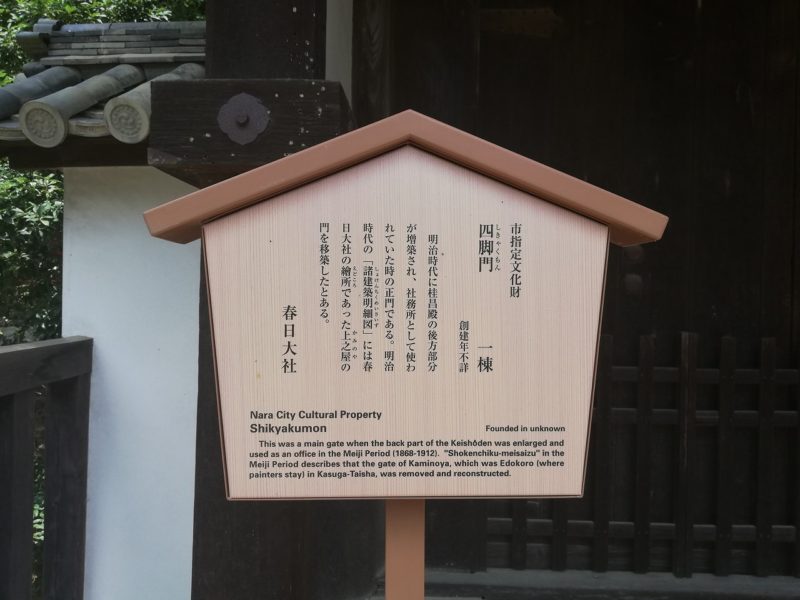
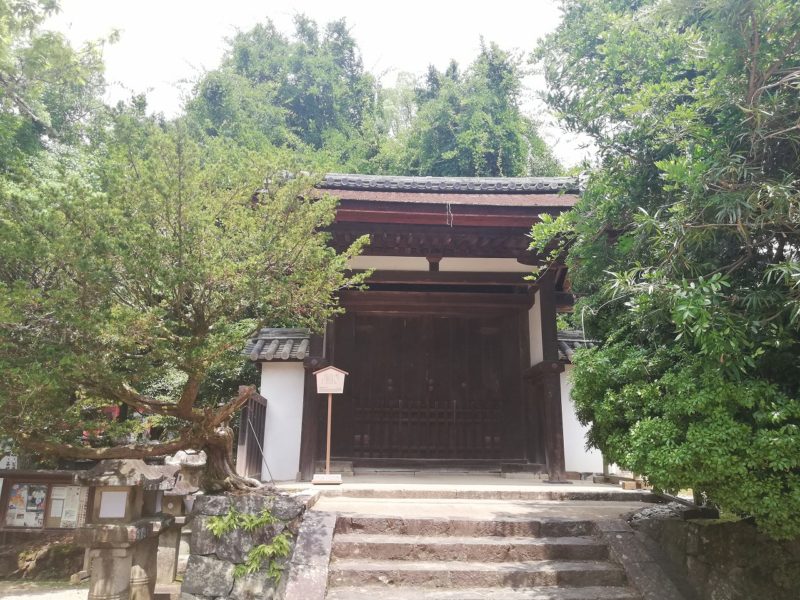
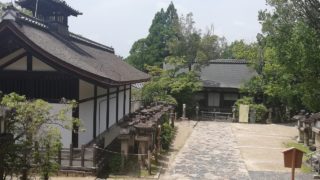
コメント